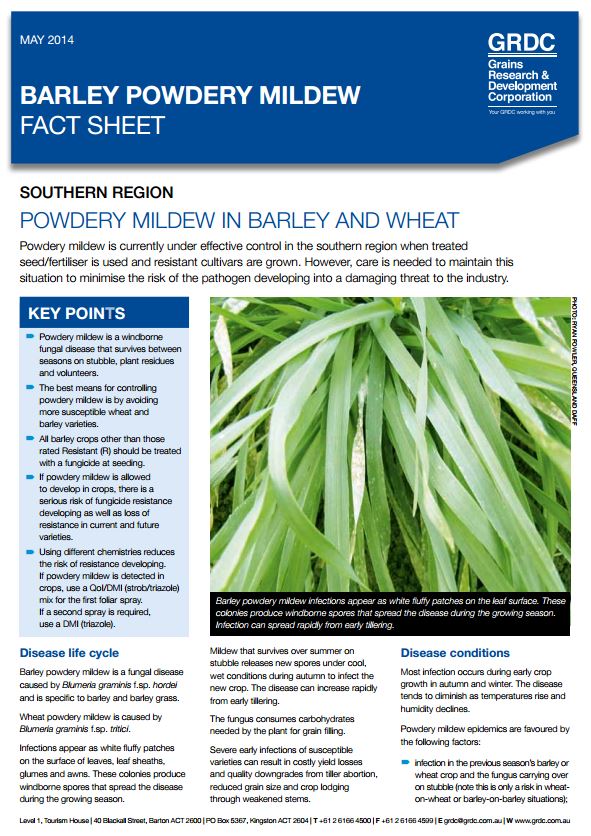Powdery mildew in barley and wheat
Published: 5 May 2014
Powdery mildew is currently under effective control in the southern region when treated seed/fertiliser is used and resistant cultivars are grown. However, care is needed to maintain this situation to minimise the risk of the pathogen developing into a damaging threat to the industry.
Key points
- Powdery mildew is a windborne fungal disease that survives between seasons on stubble, plant residues and volunteers.
- The best means for controlling powdery mildew is by avoiding more susceptible wheat and barley varieties.
- All barley crops other than those rated Resistant (R) should be treated with a fungicide at seeding.
- If powdery mildew is allowed to develop in crops, there is a serious risk of fungicide resistance developing as well as loss of resistance in current and future varieties.
- Using different chemistries reduces the risk of resistance developing. If powdery mildew is detected in crops, use a QoI/DMI (strob/triazole) mix for the first foliar spray. If a second spray is required, use a DMI (triazole).
Download PDF
Region: South
GRDC Project Code: DAQ1306-002RMX, CUR1106-001RTX,
Was this page helpful?
YOUR FEEDBACK
To protect your privacy, please do not include contact information in your feedback. If you would like
a response, please contact us.

